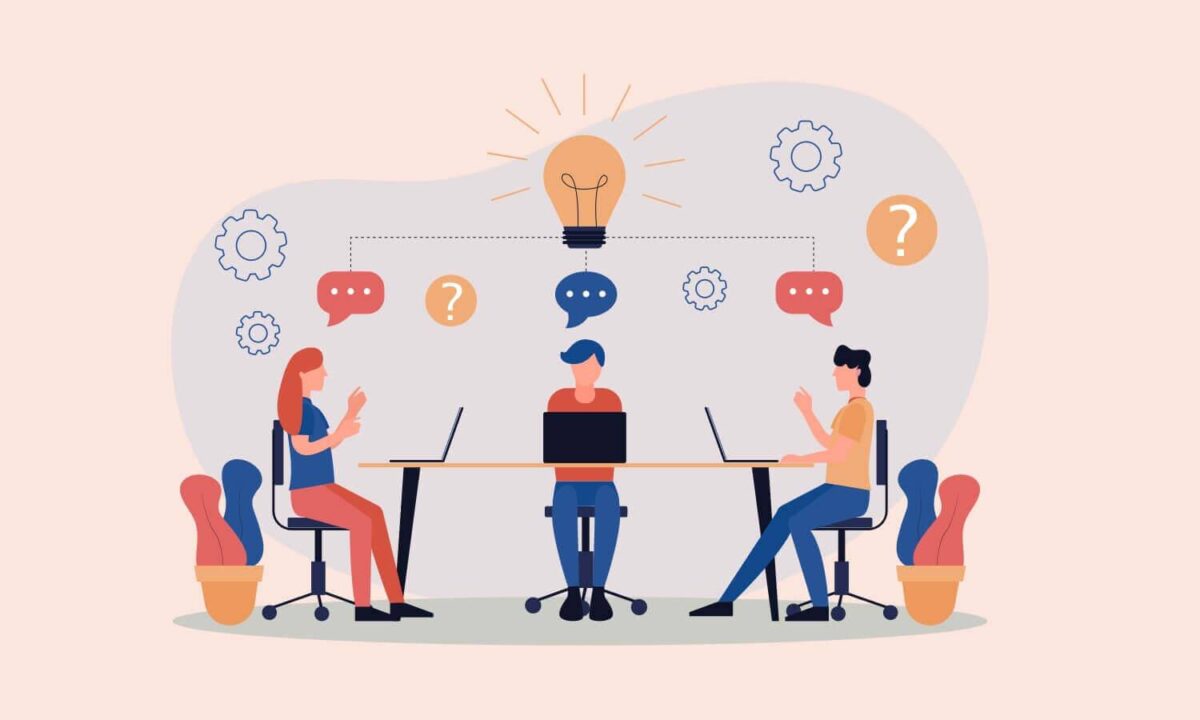The Problem
Customer research is needed to discover new needs or to gather impressions of existing products. But the process can be daunting- designing the study, gathering the resources, then spending the time required to pull it off – my God the time! All these perceived necessities tend to hold us back. Besides, we’ve been in this business for a long time. Don’t we understand these customers well enough already!
The Solution
Of course, the central point of customer research is to disabuse us of our assumptions and to learn what is new. Fortunately, gaining new understanding need not be expensive or laborious. Valuable insights await just a few simple interviews away. How few? Read on…
Putting it into Action
How Few?
The evidence shows that just 6-12 qualitative interviews can provide actionable customer insights.
This range has been confirmed by a number of studies including: A simple method to assess and report thematic saturation in qualitative research, PLos One 2020, in which researchers concluded that: “…typically 6–7 interviews will capture the majority of themes in a homogenous sample (6 interviews to reach 80% saturation). Our analyses also show that at the higher end of the range for this option (95th%ile) 11–12 interviews might be needed…”
This means that with as few as 6 interviews you can learn 80% of what you’d learn had you interviewed everyone in your market, and 11 or so will reveal virtually everything. Note, however, that these interviews must be of comparable types of people, not disparate groups. In other words, you must conduct 6 interviews for each of your personas.
Personifying Needs
A quick word about personas. These profiles are used to define different categories of customers or stakeholders. As the personification of such a category, the persona defines the typical attributes, attitudes, responsibilities, activities, needs, goals, and other factors of a type of person relative to your product space. Everyone with similar attributes is represented by one persona because that group all have very similar problems and so similar kinds of solutions and communications will resonate with all.
Interviews can help you to efficiently build and evolve a core set of personas that capture the differing characteristics and needs of each stakeholder. For example, you might identify three distinct personas: The End User, The Supervisor, and The Buyer. Periodic interviews with representatives of each offer a ready way to detail their evolving needs. (For this it’s valuable to employ the Jobs-to-be-Done construct.)
But in the process of conducting a few interviews you might also just uncover some new personas you had not anticipated. For example, by conducting some in depth interviews with Users, you discover that there are actually three distinct subtypes of users, each with distinctive problems and use cases. To clarify understanding of these three new personas you’ll want to conduct another 6 interviews for each.
Of course, interviews are not the only way to collect such insight, but they are often the most practical- as long as you apply some best practices to interviewing:
The Artful Interview
Artful interviewing is a skill that every product manager and marketer should possess and should be a frequent practice of those on your team. Emphasis on “artful”- a few tips:
Don’t Lead the Witness
The frequently seen objection during testimony on Law and Order and other shows/movies is the assertion that the opponent is “leading the witness”. In interviews this is incredibly easy to do. The selection of questions asked, the manner asked, and even subtle body language can lead the interview subject to tell the interviewer what they want to hear rather than the unvarnished truth.
Avoid leading the witness by asking only open-ended questions. No multiple-choice options nor right/wrong answers. Even better, rather than asking questions per se, ask the interview subject to tell storiesabout their experiences with the problems or products you are exploring. When people tell a story they recall and convey all the context that surrounds what they experienced. That context is vital to you understanding, and often reveals insights that your interview subject wasn’t aware of.
Peel the Onion
Use the “five-whys”, (or at least three of them) to peel the onion of an expressed want or problem so you get down to the underlying need that elicited that want. Understanding the “why” fuels your ability to solve customer problems at their root in highly differentiating ways. This level of discovery is one of interviewing’s superpowers.
It’s also important to put what you hear into context. As you peel the onion ask the question: “compared to what?”. This question prompts your subject to consider and explain the relative value of needs or solutions, revealing the benchmarks against which your solution will ultimately be compared.
Follow Tangents
The artful interviewer must be prepared to let the subject branch off into tangents. Most interviewers will want to reign in the discussion when topics seem to stray, but this is a mistake. Apparent tangents often lead to associated issues that the interviewer had never considered. They are exactly the kinds of things that one hopes to learn during an interview, that is: learning what you didn’t know that you didn’t know.
Prepare a Discussion Guide, Not a Questionnaire
A quick search will reveal endless lists of typical interview questions that can help you to compose a discussion guide for your interviews. I always prepare a guide with many questions prior to conducting an interview. However, once the interview starts, I rarely refer to the question list. The job of the interview is not to conduct a survey in person. It is to listen and probe in the direction that the subject wants to take you. When an interview reveals things you hadn’t thought to ask about, you’ve succeeded. But you won’t get there if you methodically execute your discussion guide.
Conclusion
When a tranche of interviews is over, use affinity mapping or other approaches to coalesce interview learnings into themes by persona, then into actionable insights that can drive product and marketing initiatives. Insights that start from interviews can also be the driver and justification for investment in more formal, quantitative research to enumerate the particulars. They help you to understand what you need to learn more about.
Customers are a moving target because their needs continuously evolve, their standards rise, and the solutions offered by competitors continuously reset the bar. It’s a lot to keep up with. Interviews are a low cost, practical, and very insightful way to stay abreast. Because you can learn so much from so little, your team ought to make customer interviewing a regular (weekly) practice.
By: Bill Haines, Partner- Marlborough Street Partners
Most Recent Posts
Explore the latest innovation insights and trends with our recent blog posts.













